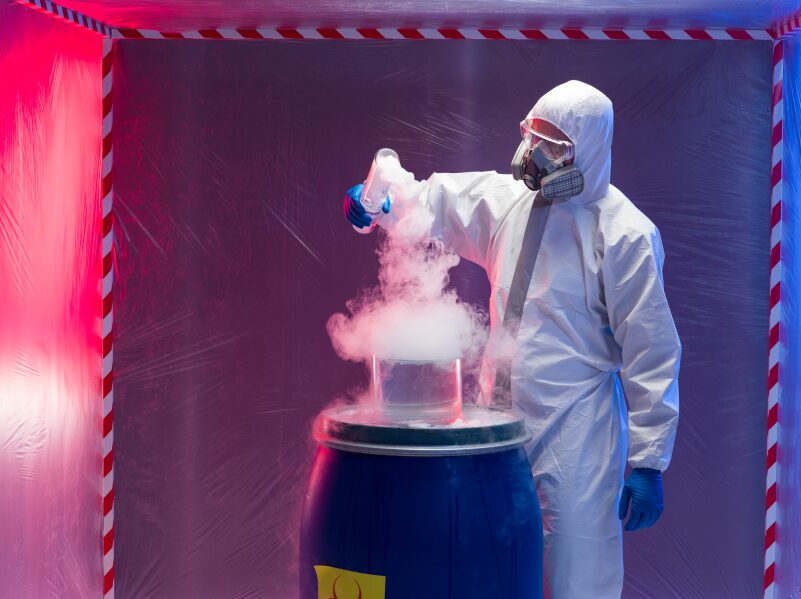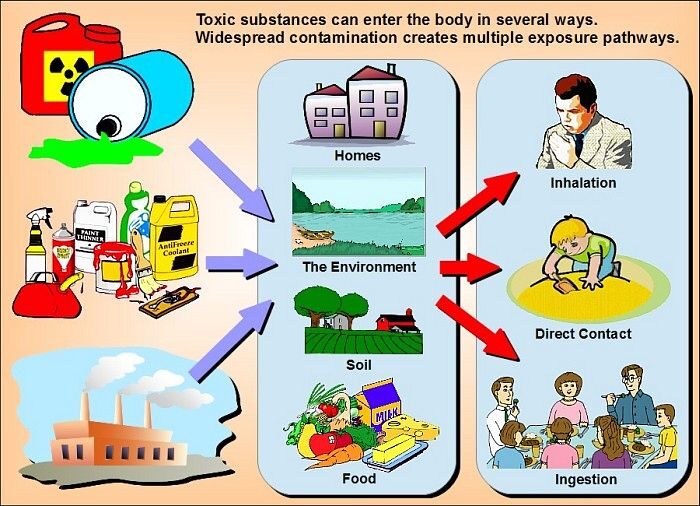Demystifying Chemical Exposure in Everyday Life: We live in a world saturated with chemicals. From the cleaning products under our sink to the flame retardants in our furniture, chemicals are woven into the fabric of our daily lives. But with so many chemicals around us, it’s natural to wonder: are they safe? Are we constantly bombarded with toxic substances that are silently harming our health?
This article aims to demystify chemical exposure, separating fear-mongering from fact. We’ll explore the different types of chemical exposure, the factors that determine risk, and how to navigate a world filled with chemicals without unnecessary anxiety.
Unveiling the Spectrum: Different Types of Chemical Exposure

Chemical exposure can happen in various ways, and not all exposure is created equal. Here’s a breakdown of the most common types:
1. Acute Exposure
Imagine spilling bleach on your hand – that’s acute exposure. It’s a high-level exposure that happens over a short period. Symptoms of acute exposure can be immediate and vary depending on the chemical and the amount of exposure. (Think burning, irritation, or dizziness).
2. Chronic Exposure
This refers to repeated, low-level exposure to a chemical over a long period. Imagine breathing in small amounts of dust from flame retardant furniture every day for years – that’s chronic exposure. The effects of chronic exposure can be subtler and may take years to manifest.
3. Occupational Exposure
Certain professions, like construction workers or factory employees, face a higher risk of exposure to specific chemicals due to the nature of their work.
Understanding Risk

Not all chemicals are created equal, and the risk associated with exposure depends on several factors:
1. The Specific Chemical
Some chemicals are inherently more toxic than others. For example, lead is known to have a detrimental impact on children’s development, while table salt is generally safe in moderate amounts.
2. The Dose Makes the Poison
This famous adage by Paracelsus holds true. The amount of exposure significantly impacts the risk. A single drop of bleach might cause irritation, but a large volume could lead to serious health problems.
3. The Route of Exposure
How a chemical enters your body plays a crucial role. Inhaling dust particles is generally more dangerous than ingesting a small amount of the same substance.
Age, health status, and genetics can also influence how your body reacts to chemical exposure. For example, children are more susceptible to the harmful effects of certain chemicals due to their developing bodies.
Navigating a Chemical World: Simple Steps for Everyday Life
While complete elimination of chemical exposure is unrealistic, there are steps you can take to minimize your risk:
- Read Labels and Safety Data Sheets (SDS): Before using a product, familiarize yourself with the ingredients and safety precautions.
- Prioritize Ventilation: Open windows and use exhaust fans whenever using cleaning products or paint.
- Choose Natural Alternatives When Possible: Opt for natural cleaning products or homemade solutions whenever feasible.
- Wash Fruits and Vegetables: Washing produce removes dirt and potential pesticide residues.
- Limit Processed Foods: Highly processed foods often contain more artificial ingredients and additives.
- Stay Informed, Not Overwhelmed: There are reliable resources available from government agencies and health organizations.
Conclusion
Chemical exposure is a complex issue, but by understanding the different types, risk factors, and preventative measures, you can make informed choices about your environment and minimize potential risks. Remember, knowledge empowers you to make informed decisions for your health and well-being.
You Might Also Like….
- Nutrition Tips for Effective Weight Management and Portion Control
- How Visiting Protected Areas Can Safeguard Our Planet
- Nutrient Rich Foods for Enhancing Cognitive Function
FAQs
Q1: Should I be worried about every chemical I encounter?
Not necessarily. By understanding the factors that determine risk and taking precautions, you can minimize your exposure to harmful chemicals.
Q2: Where can I find reliable information about chemical safety?
Government agencies like the Environmental Protection Agency (EPA) and health organizations like the World Health Organization (WHO) offer reliable information on chemical safety.
Q3: Are there any apps or tools that can help me learn about chemicals in everyday products?
Yes, there are several apps available that allow you to scan product barcodes and access information about the ingredients and potential health risks.
Q4: What if I’m concerned about potential exposure in my workplace?
If you are concerned about chemical exposure at work, talk to your employer or a health and safety representative. There are regulations in place to protect workers from hazardous materials.
Q5: Is there anything I can do to detoxify my body from past chemical exposure?
While there’s no magic bullet for detoxification, focusing on a healthy lifestyle with a balanced diet, regular exercise, and adequate sleep can support your body’s natural detoxification processes.

